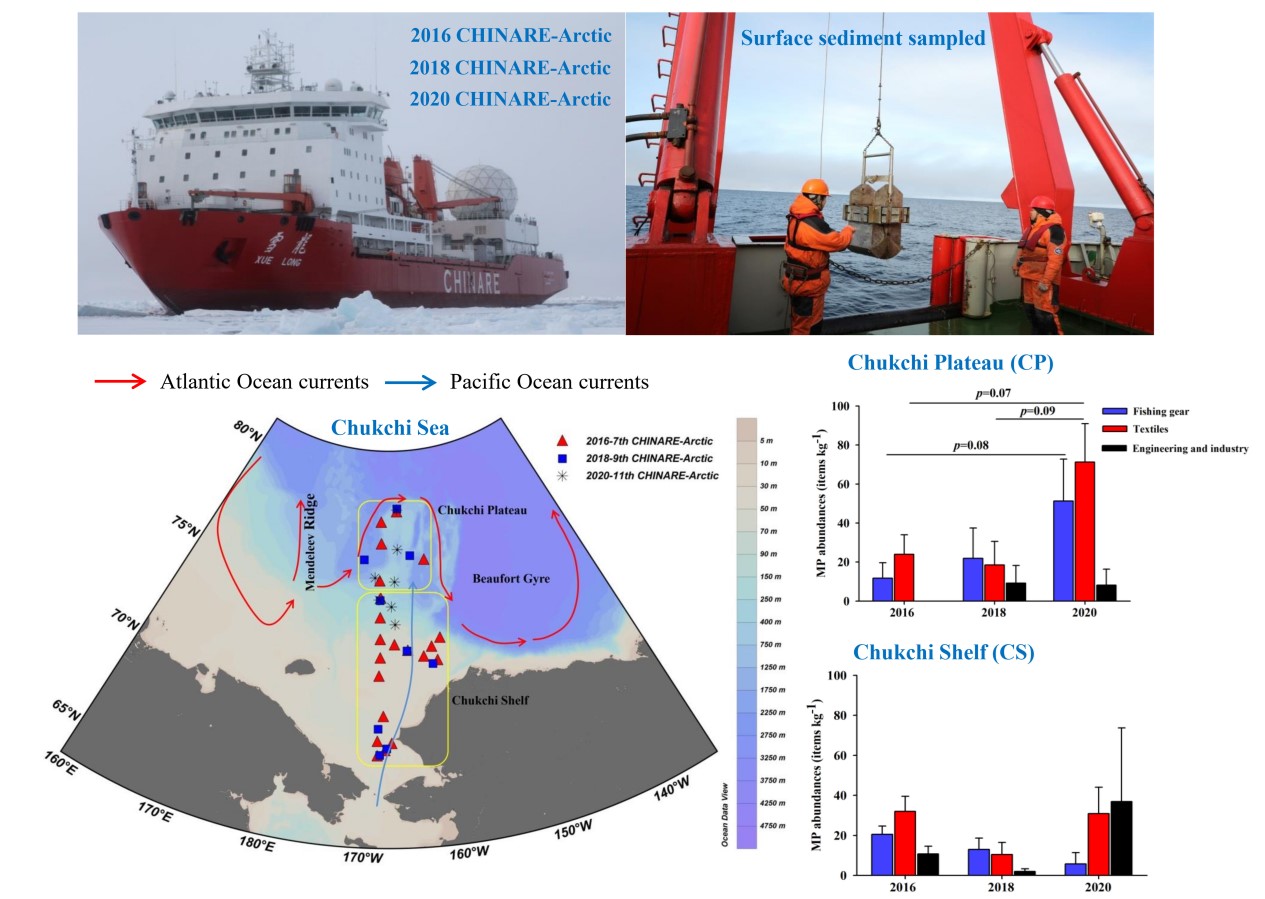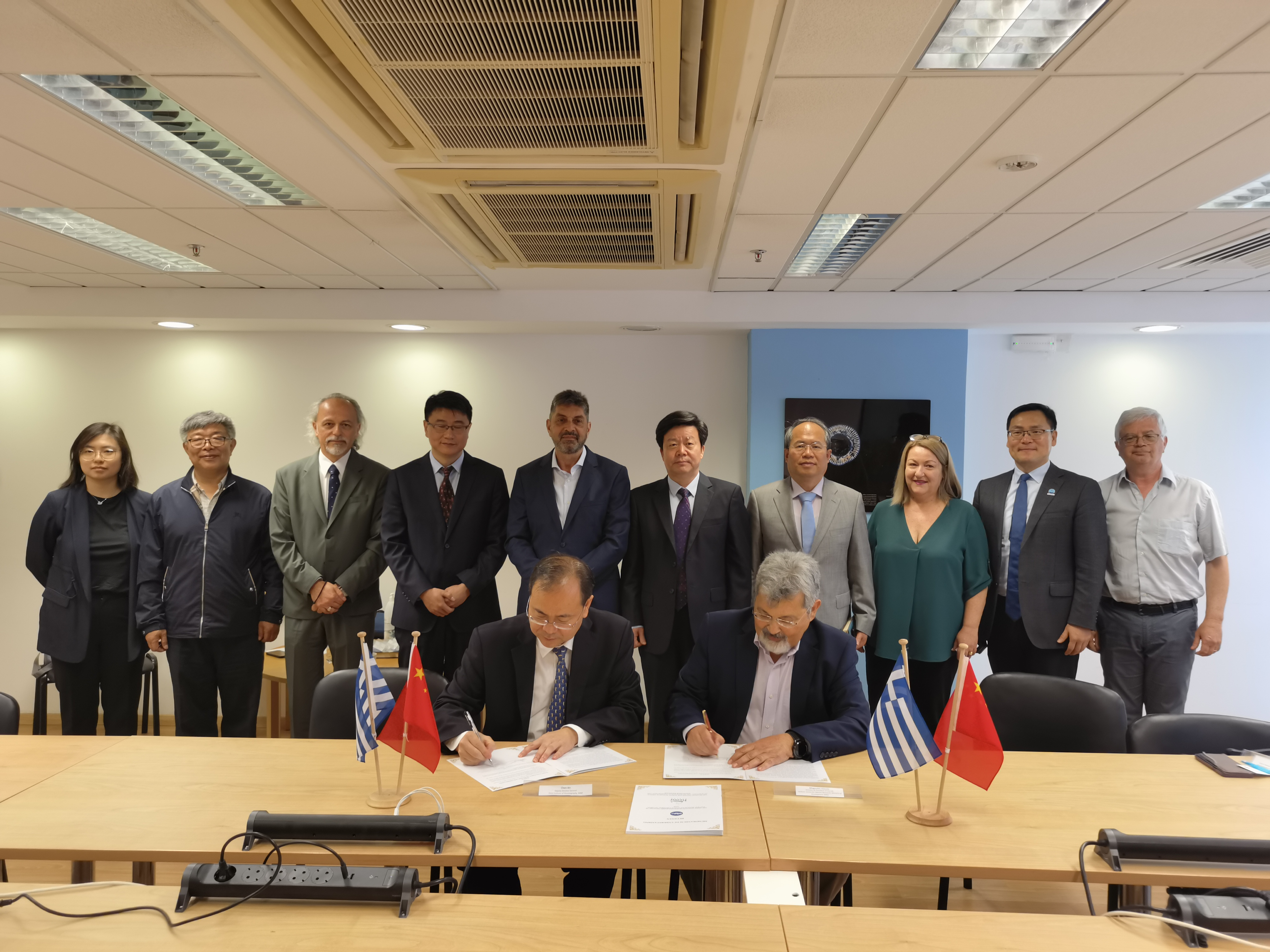
New Progress in Microplastic Pollution in the Arctic Ocean Sediments
Release Time:2021/09/26
Recently, the Marine Ecotoxicology Laboratory (MEL) from the Third Institute of Oceanography, MNR, has made new progress in the research of microplastic pollution in the sediment from the Chukchi Sea through the long-term series. Sponsored by the first batch of the 2020 Youth Innovation Fund Project of Xiamen, Special fund for the Chinese Arctic and Antarctic Research, the National Key Research and Development Program of China, and the National Natural Science Foundation of China. The achievements has been published in the journal of “Science of the Total Environment” (IF = 7.931, JCR Q1), titled “Spatio-temporal variation of microplastic pollution in the sediment from the Chukchi Sea over five years”, with Dr. FANG Chao being the first author, Dr. BO Jun and Dr. LIN Longshan the co-corresponding authors.
Microplastics (MPs) are an emerging concern in the Arctic and have received widespread attention over the years. The Chukchi Sea not only serves as a sink for global MPs, but also represents a source of Arctic MPs, for this area undergoes the most significant change in sea ice across the Arctic Ocean. Sediments have also been proposed as an important sink for MPs, and the high dynamics of the benthic environment and bioturbation in the Chukchi Sea may affect the distribution patterns of sediment-bound MPs. However, information is lacking in the spatial and temporal trends of MPs in sediments from the Chukchi Sea. Besides, data are particularly limited on the correlation between Arctic sea ice variations and sedimentary MP abundance.
Therefore, in the present study, we obtained time-series data on sediment MP pollution from the Chukchi Sea over five years through three voyages (in 2016, 2018, and 2020) of the Chinese National Arctic Research Expedition. The results suggest that the Chukchi Plateau is an accumulation zone for fibers originating from fishing gear and textiles under the dual influence of the Pacific and Atlantic Ocean currents. The Chukchi Shelf might be a source of several engineering-and industry-related MPs,and the melting of Arctic sea ice impact greatly on the increase in MP levels in sediments. Overall, this study can improve the evaluation of the fate, behavior, sources, and ecological implications of MPs in the changing Arctic and provide insights for future research.

Graphical abstract of MP pollution in terms of fishing gear, textiles and engineering and industry materials in the Chukchi Plateau and Chukchi Shelf
In recent years, MEL made a series of achievements in the research of MP pollution in the Arctic: Investigated the MP contamination and characteristic in the 12 benthic species from the Arctic and sub-Arctic regions for the first time; sea anemones could potentially serve as a bioindicator of MP pollution in Arctic ecosystems; the MPs in the investigated benthic species might originate from the ocean currents, fishery activities, and melting sea ice. These studies contribute to the deeper understanding of the environmental fate, sources, biological effects of MPs and their relationship with climate change, and will serve international organizations such as the Arctic Council for the effective measures to control MP pollution in the Arctic.
Link to the paper: https://www.sciencedirect.com/science/article/abs/pii/S0048969721056072#f0040
-
China Hosts Side Event on the Theme of Blue Citizen at Our Ocean Conference 202404/19/2024
-
APEC Training Workshop on Capacity Building for Blue Citizen successfully conducted in Xiame...09/15/2023
-
APEC Marine Sustainable Development Center participated in 21st APEC Oceans and Fisheries Wo...08/01/2023
-
International Atomic Energy Agency Training Webinar in Tracer Oceanography was held echoing ...06/09/2023
-
Research Progress on the Degradation of Polystyrene by Plastic-eating Marine Benthic Polychaete and their Gut Microbiome04/01/2024
-
Deep-sea Microbial Genetic Resources: New Frontiers for Bioprospecting02/02/2024
-
Progress from marine-derived Fungus01/31/2024
-
Deep-sea bacteria involved plastic biodegradation and microplastic generation01/18/2024
-
New progress in Late Pleistocene sea level change and tectonism control on the formation of the Old Red Sand along the southeastern coast of China01/10/2024
-
Dr. Lin Longshan’s team has made new progress in Antarctic fish biodiversity research12/08/2023

